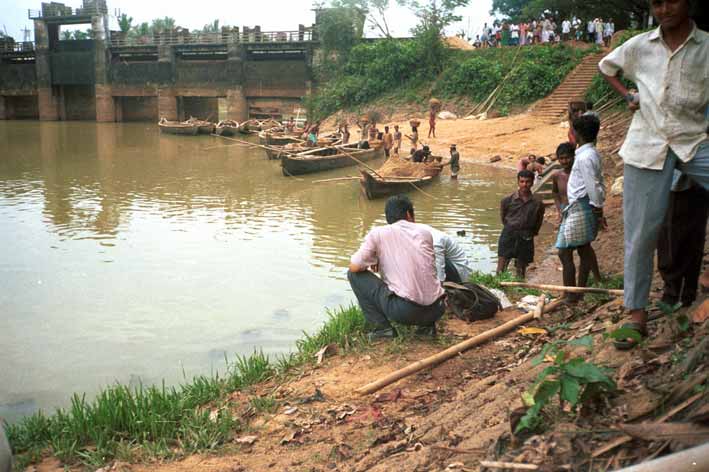 |
Locality of Cryptocoryne
retrospiralis in the Malappuram district (Kerala state, India).
photo te Beest |
|
 |
Close up of the riverbank with
emerged growing plants in December.
photo te Beest
|
|
 |
Another close up of the river bank
with C. retrospiralis.
photo te Beest |
|
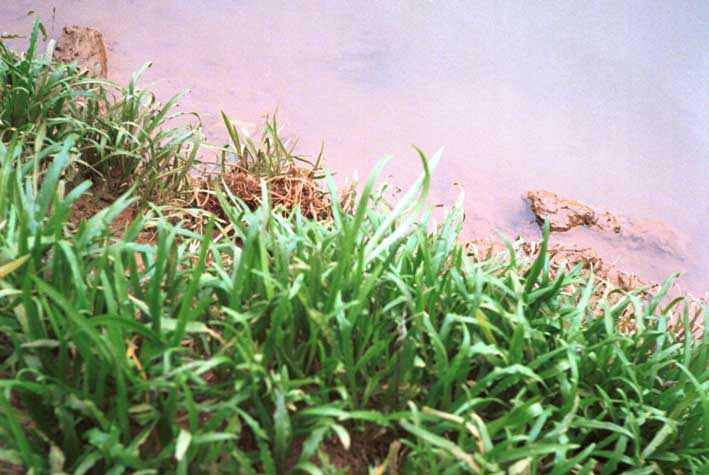 |
Yet another locality with C.
retrospiralis.
photo te Beest
|
|
| |
|
|
|
 |
Habitat of C. retrospiralis in India. This plant has rather narrow leaves.
coll. Bogner 1852
photo Bogner
|
|
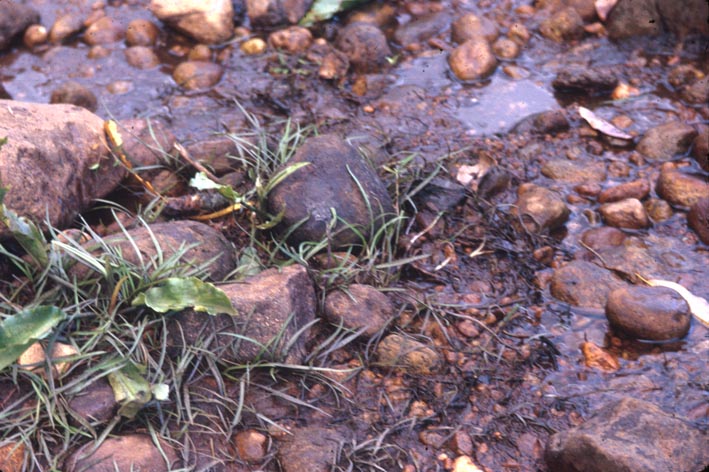 |
The same habitat (as left) of C.
retrospiralis. This very tiny form grows together with a Lagenandra toxicaria (?).
coll. Bogner 1852
photo Bogner
|
|
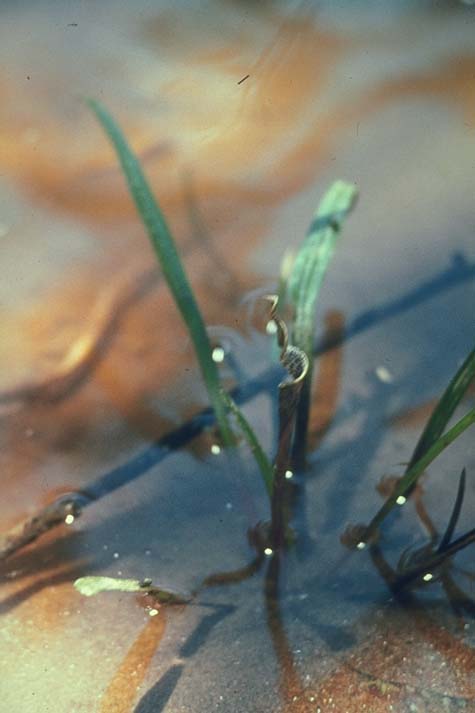 |
Another habitat of C.
retrospiralis. The limb of the spathe is relative short.
coll. Bogner 517
photo Bogner
|
|
 |
Herbarium leaves: A, B: C. retrospiralis; C, D: C. albida; E: C.
crispatula var. flaccidifolia; F, G: var. crispatula; H, J, K: var. balansae and I: var. tonkinensis.
photo Jacobsen
|
|
| |
|
|
|
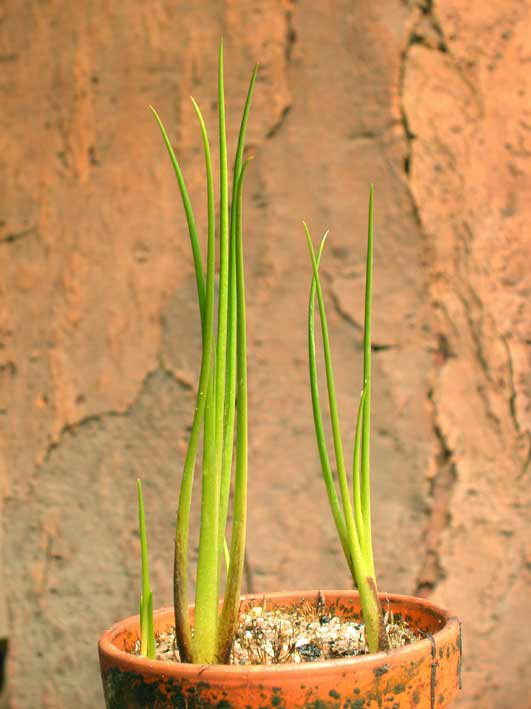 |
C. retrospiralis has a
dormant phase with terete leaves of ca. 5 -10 cm long (chives form). This is also known in C. crispatula var. crispatula and var. yunnanensis.
coll. unknown, cult. B 1055
|
|
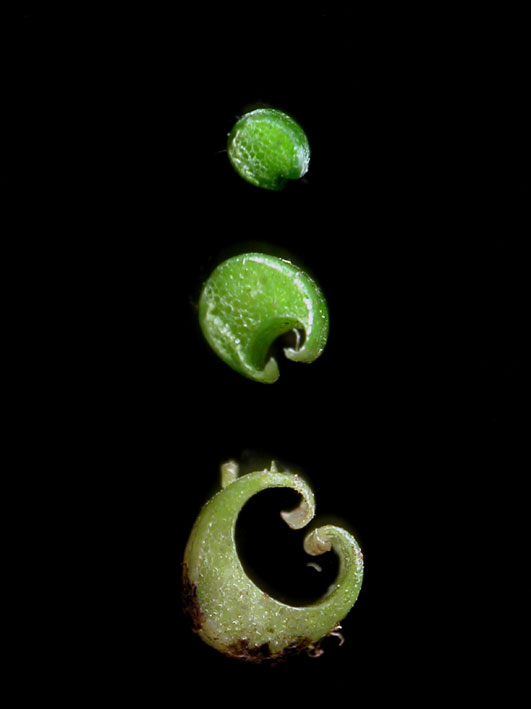 |
The terete leaves don't have a
distinct petiole. Transverse sections of the top, middle and lower part of the leaf.
coll. unknown, cult. B 1055
|
|
 |
Flowering starts usually immediately
when the plant get out of the dormant stage. The elderly leaves in the picture are typical
terete.
coll. unknown, cult. Blass s.n.
photo Blass
|
|
 |
A non flowering specimen, also
showing the transition of terete. to 'normal' leaves.
coll. unknown, cult. Kasselmann s.n.
photo Kasselmann
|
|
| |
|
|
|
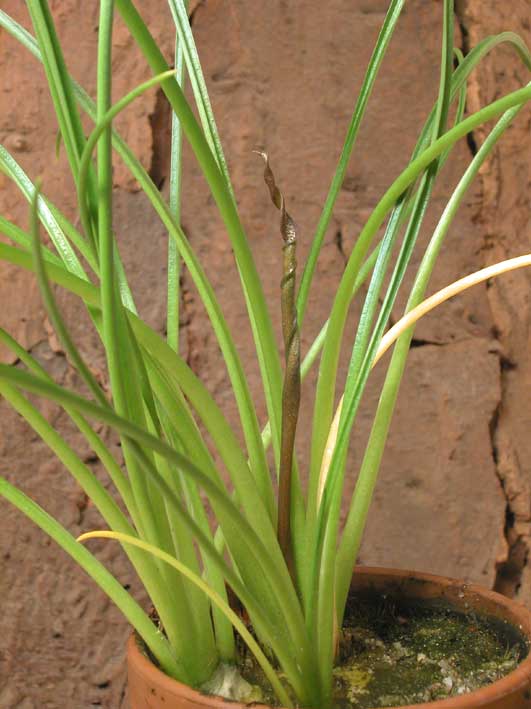 |
C. retrospiralis has green, smooth
leaves with a very prominent mid vein, exposed on the lower side of the leaf.
coll. unknown, cult. B 1055
|
|
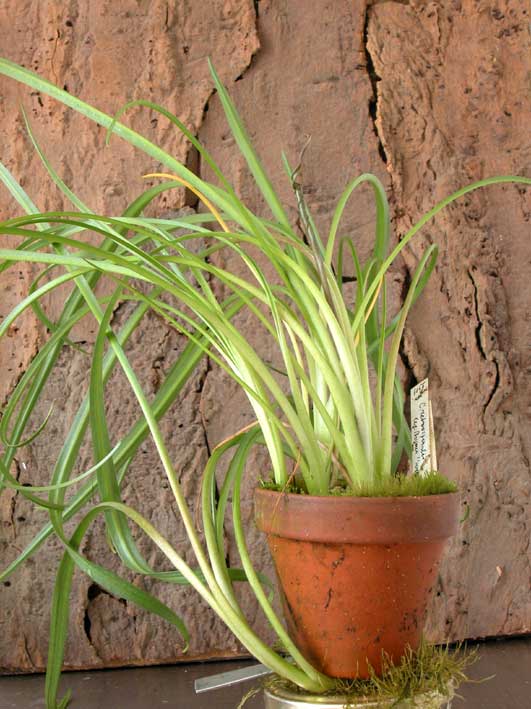 |
The plant grows very fast, in two months the pot
is overcrowded and the leaves are up to 50 cm long and 1 cm wide. It may go dormant again
after a few months!
coll. unknown, cult. B 1055
|
|
 |
Smooth green leaves without any purple.
coll. unknown, cult. NJ 2971
photo Jacobsen
|
|
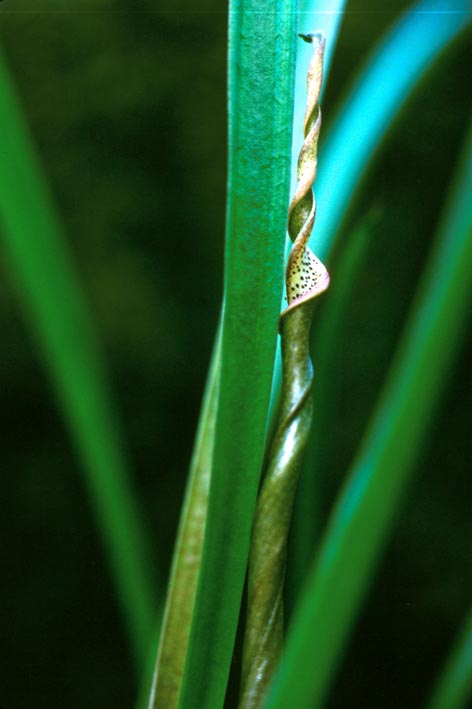 |
The limb of the spathe of C. retrospiralis (same plant left).
coll. unknown, cult. NJ 2971
photo Jacobsen
|
|
| |
|
|
|
 |
The limb of the spathe of C.
retrospiralis with more or less rounded dark spots.
coll. unknown, cult. NJ 3130
photo Jacobsen
|
|
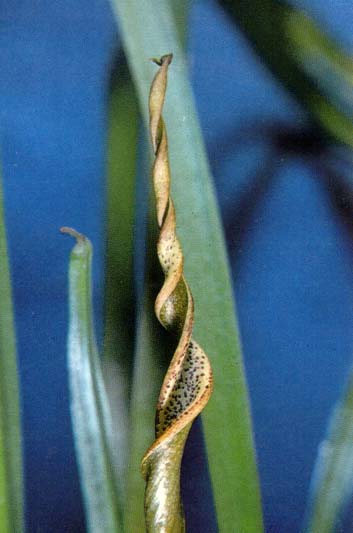 |
C. retrospiralis has
rounded spots on the limb while C. crispatula have line shaped markings on the limb.
coll. unknown, cult. NJ
photo Jacobsen
|
|
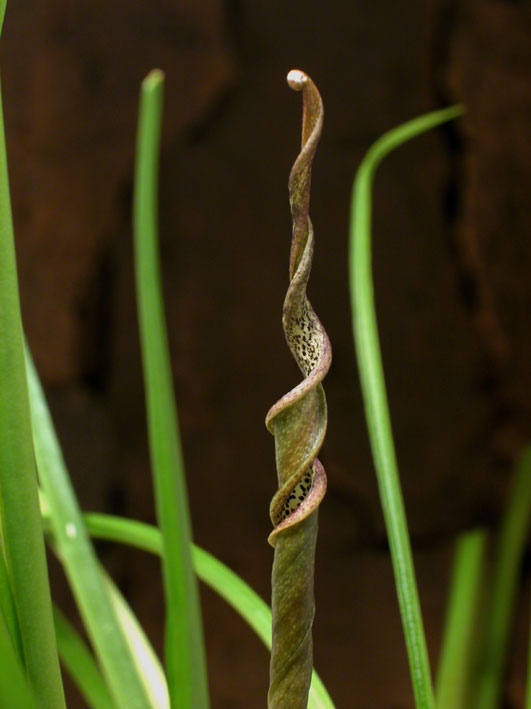 |
The limb may start opening from the
top ...
coll. unknown, cult. B 1055
|
|
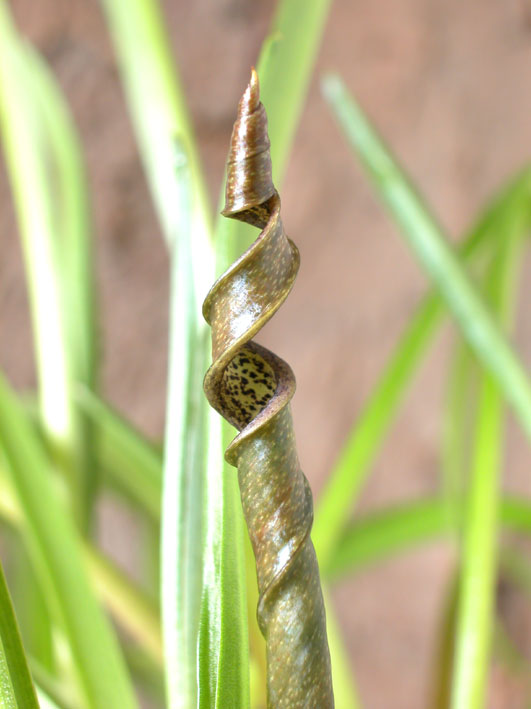 |
... or somewhat lower as is the case
here..
coll. unknown, cult. B 1055
|
|
| |
|
|
|
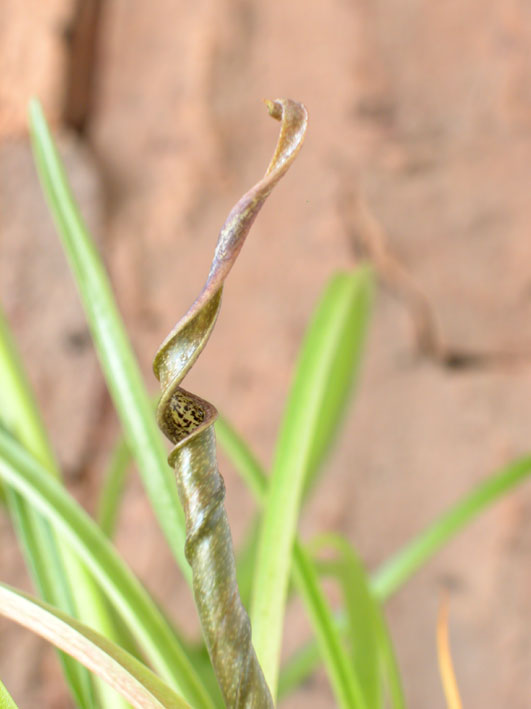 |
The top of the limb may end in an
oblique position.
coll. unknown, cult. B 1055
|
|
 |
The spotted inner side of the limb.
coll. unknown, cult. B 1055
|
|
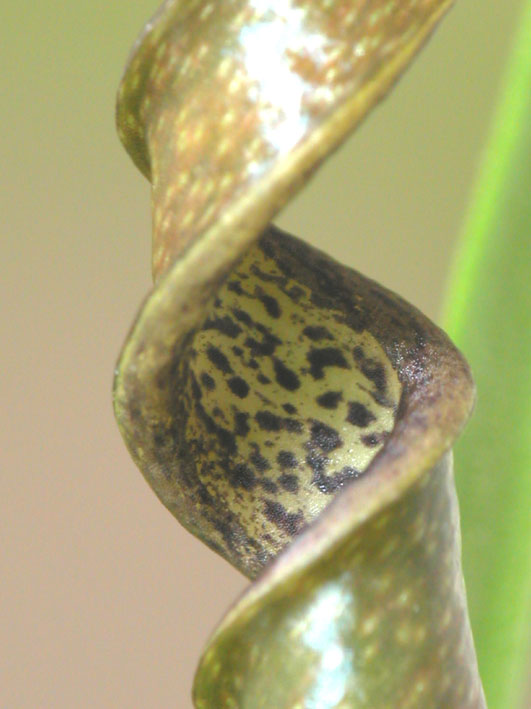 |
More spots.
coll. unknown, cult. B 1055
|
|
 |
Opened kettle of C.
retrospiralis. Note the prominent constriction in the wall and the depressions
(alveoli) opposite to the male flowers.
coll. unknown, cult. B 1055
|
|
| |
|
|
|
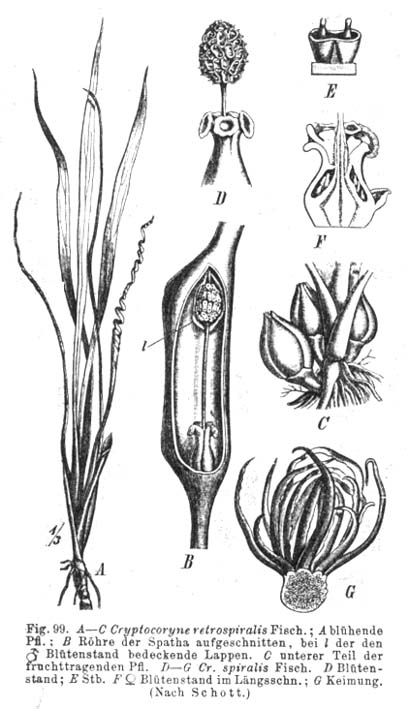 |
Drawing in Engler (1920) of C.
retrospiralis. Note again the extreme spiraled limb of the spathe.
|
|
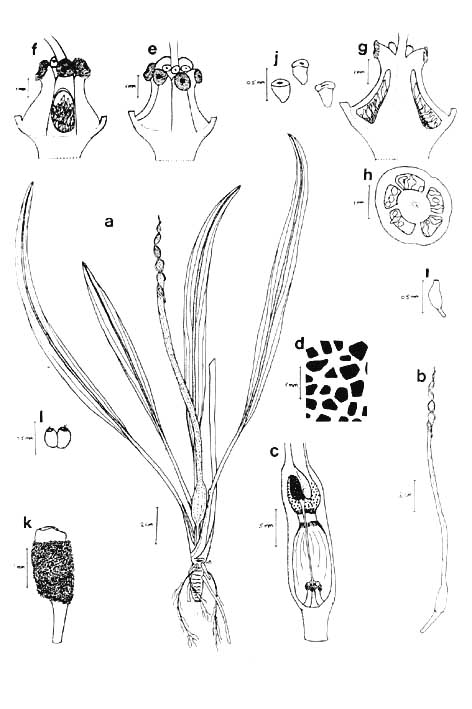 |
Drawing in te Beest (1998) of C.
retrospiralis
|
|
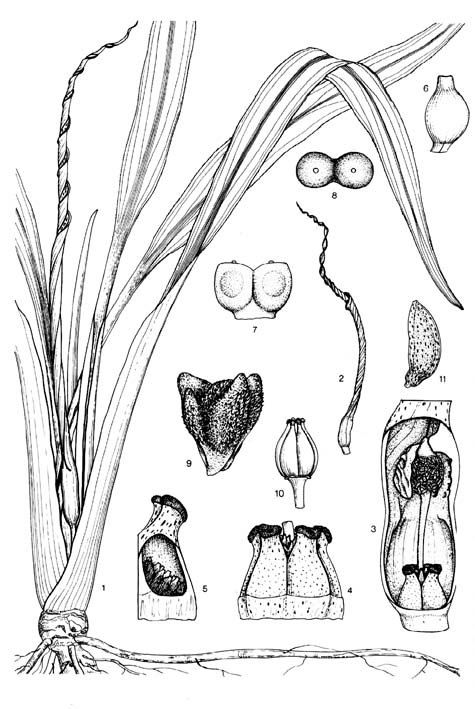 |
De Wit (1990) gives a picture of a
rather broad leafed C. retrospiralis. The limb of the spathe is strongly spirally
twisted.
drawing Ike Zewald
|
|
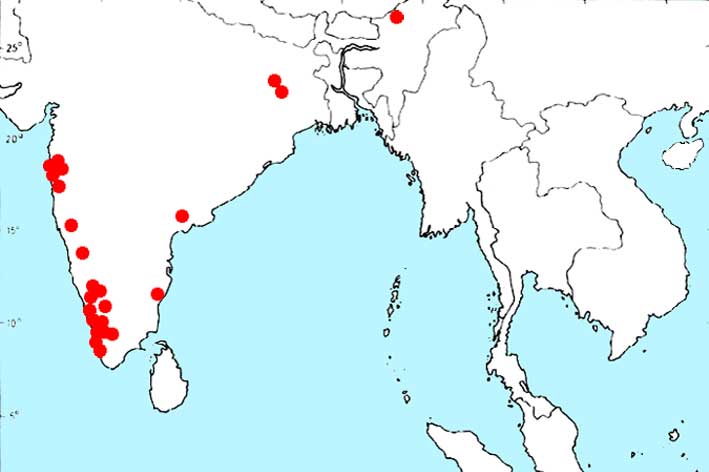 |
Distribution of C. retrospiralis on mainland Asia.
|
|
| |
|
|
|
Cryptocoryne retrospiralis is because of its seasonal character not well suited for the
aquarium.
The dormant phase is probably an adaptation to submerged conditions at low light
levels (like seen in C. crispatula). When the water goes down and the plants become emerged, they thrive very fast. May be there exist also strains which do not have this seasonal character.
In emerged culture, the dormant phase is from mid-summer to February. In this
phase they easily stand at 15 degree centigrade in wintertime. Off March, April they boost
and accept full sun with temperatures up to 35 degree.
C. retrospiralis is offered frequently in pet shops. Probably these plants are
actually C. crispatula var. flaccidifolia,
which is very suitable for the aquarium.
For reference to the other plants and the literature see the page on the crispatula group.
Updated July 2012 |
|